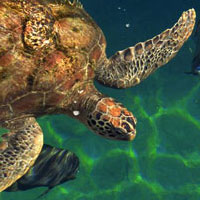Animals
Animals are affected by the operation of nuclear power -- but are the most ignored of all the nuclear industry's victims. Whether sucked into reactor intake systems, or pulverized at the discharge, aquatic animals and their habitats are routinely harmed and destroyed by the routine operation of reactors. In addition, animals are forced to remain in highly radioactive areas after a nuclear disaster, such as around Chernobyl and Fukushima. Some of our latest stories about animals can be found on our newest platform, Beyond Nuclear International. And for more about how routine reactor operations harms marine wildlife, see our Licensed to Kill page
.................................................................................................................................................................................................................





 April 14, 2021
April 14, 2021